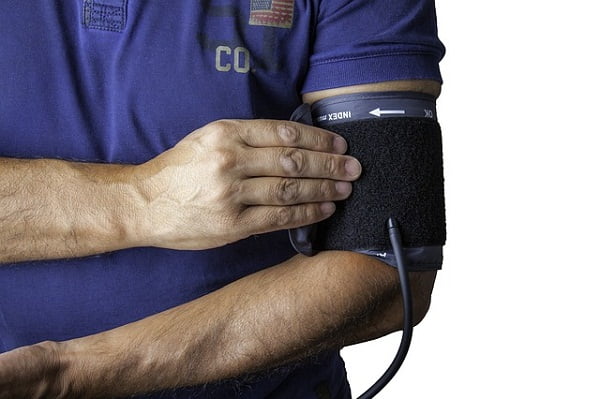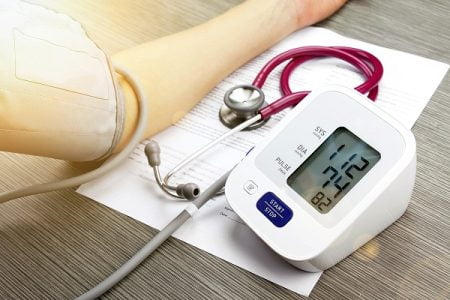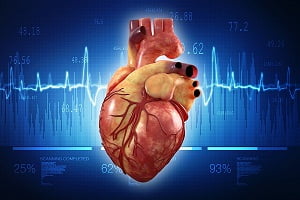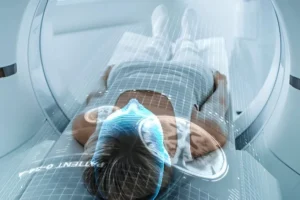Low Blood Pressure: Causes, Symptoms, Diagnosis, Treatment
- Updated on: Jul 10, 2024
- 6 min Read
- Published on Oct 3, 2019

What is hypotension (Low blood pressure)?
Blood pressure is defined as the force applied by the blood on the walls of blood vessels when the blood is moving from heart to other part of the body. Blood pressure is measured in the arteries.
Hypotension is the condition in which the pressure of the blood flowing in the arteries is lower than the normal limit. Hypotension is also known as low blood pressure.
Blood pressure is measured in two forms- systolic pressure and diastolic pressure. Systolic pressure is the pressure observed by the arteries when the heart is contracting whereas the diastolic pressure is the blood pressure observed between the two heart beats, i.e, when the heart is in its relaxed state.
The normal range of blood pressure measured in a healthy individual ranges between 90/60mmHg to 120/80mm Hg. Blood pressure lower than 90/60mm hg is referred to as low blood pressure or hypotension.
Normally blood pressure fluctuates greatly during a day. It lowers when a person is sleeping and rises when he or she awakes. The blood pressure also varies with the emotions an individual experiences during the day.
The human body is very sensitive to changes in the blood pressure. As soon as it experiences a low blood pressure, it automatically adjusts the limit to the normal range. But sometimes, the body is unable to normalize the pressure and hence a condition of hypotension is developed in which the blood pressure remains low for a long period of time.
More: Hypertension (High Blood Pressure)
What are the causes of hypotension?
Variations in blood pressure are different in all individuals. The smallest of blood pressure drop can result in severe problems in a person. Normally, hypotension is caused due to infection, sudden loss of blood, heart attack, any allergic reaction, etc.
There are many causes of experiencing a low blood pressure. These are listed below:
Dehydration
Dehydration is the most common cause of hypotension in people. It is very commonly seen in people who suffer from diarrhea, nausea, vomiting or excessive exercise.
Pregnancy
In pregnancy, the circulatory system of a woman expands due to which the blood pressure drops. This is a normal phenomenon and the blood pressure returns to its normal limit after giving birth.
Heart problems
There are certain heart conditions like bradycardia (low heart rate), heart failure, heart attack, etc which can result in low blood pressure.
Severe blood loss
During severe injury, lot of blood is lost which reduces the amount of blood in the body. As a result of lower blood levels, the blood pressure also becomes very low.
Infection
Septic shock is a life threatening condition in which a patient experiences a majority of blood pressure drop due to the infection which enters the blood stream.
Anaphylaxis (severe allergic reaction)
Anaphylaxis can be caused due to factors such as medications, food items, insect bite, etc. Reactions caused due to the above factors can result in a major blood pressure drop.
Endocrine problems
There are some endocrine problems which usually triggers low blood pressure such as parathyroid disease, hypoglycemia (low blood sugar), adrenal insufficiency, etc.
Lack of nutrients in the diet
Some nutrients for example, vitamin B-12, folate, etc are useful in producing red blood cells. If these nutrients lack in their required levels, an anemic condition may develop which can result in hypoglycemia.
Medications
There are certain medicines which can result in the occurrence of low blood pressure. Some of the medications are as follows:-
- Alpha blocker medicines like prazosin
- Water pills like furosemide and hydrochlorothiazide
- Drugs like pramipexole for Parkinson’s disease
- Drugs used for the treatment of erectile dysfunction like, slidenafil, tadalafil, etc.
- Medicines such as amitriptyline used for treating depression, etc.
What are the different types of hypotension?
Hypotension is classified into three subtypes on the basis of its causes. These are as follows:
Orthostatic hypotension
Sometimes, when a person stands up from sitting position, he or she may experience some feelings of dizziness or light headedness. This is generally due to the low blood pressure. Normally, the body naturally regains its normal blood pressure range within a fraction of time but sometimes it fails to do so. Such a condition in which the body is unable to adjust its blood pressure from low to normal range is referred to as orthostatic hypotension. This type of hypotension is usually observed in all age groups but is more common in older people, especially those who have a poor health.
Orthostatic hypotension can also be a sign of some other medical condition. Therefore, treatment often focuses on treating those particular conditions.
Postprandial hypotension is a type of orthostatic hypotension in which there is a sudden blood pressure drop experienced by a patient after a meal. This condition is commonly observed in the older people.
Neurally Mediated Hypotension
Neurally mediated hypotension is a type of hypotension which is caused due to the blood pressure drop because of long hours of standing. This condition mostly affects children and young adults. This condition is a result of a miscommunication between the brain and the heart.
Hypotension due to nervous system damage
Hypotension due to the nervous system damage is generally referred to as Shy-Drager syndrome. In this condition, the autonomic nervous system of the brain is damaged which controls the involuntary actions of the body such as maintaining blood pressure, breathing, heartbeat, etc.
What are the symptoms of hypotension?
Some common symptoms of hypotension experienced by patients are as follows:
- Dizziness
- Lightheadedness
- Nausea
- Fainting or syncope
- Blurred vision
- Lack of concentration
- Fatigue
In cases where people experiences shock, good amount of blood and oxygen fails to reach the particular organ which may include brain also. In such cases, the earliest signs of reduced blood flow may involve sleepiness, confusion, etc.
It is very difficult to detect the symptoms of hypotension due to shock in its early stage but as the time passes, the condition becomes more prominent and the symptoms are clearly observed.
Some common signs and symptoms of hypotension due to shock are as follows:
- The skin looks pale or blue with constant sweating. In some cases, a blue colored network of line is visible under the skin.
- The pulse may become rapid and weak
- The person may experience fast breathing
What is the diagnosis for hypotension?
A person should immediately contact the doctor in case he or she experiences any of the above symptoms. The doctor will then examine the patient to know the exact cause of hypotension.
Hypotension is generally diagnosed on the basis of a patient’s medical history. There are various types of diagnostic tests which can be used for the diagnosis of low blood pressure. Some of them are as follows:
Blood tests
Blood tests are usually done to know the cause of low blood pressure or hypotension. Blood test results show the low level of sugar in the blood or anemia.
Electrocardiogram (EKG)
An electrocardiogram is a diagnostic test which is used to detect and record the electrical activity of heart. With the help of an EKG, the doctor can study any irregularities in the heartbeat rate of a person.
Echocardiography
Echocardiography (Echo) is a diagnostic test with the help of which the doctors can determine the size and shape of the heart. Echo test uses sound waves which help in creating a moving image of the heart.
Tilt table test
Tilt table test is usually performed when the patient experiences lots of fainting episodes without any known reason. In this test, the patient lies down on a moving table. As the table changes its position, the doctor checks the patient’s reaction.
This test is generally done to diagnose neutrally mediated and orthostatic hypotension.
Valsalva maneuver
This test is a part of the autonomic nervous system that controls functions such as heartbeat, dilation and contraction of blood vessels, etc.
During the test, the patient is asked to perform a breathing procedure in which he has to take in deep breath and force it out through lips. During this step, the test is performed and the blood pressure is checked.
Stress test
There are some heart problems which are very easy to diagnose especially when the heart is working hard under stress. In stress test, the person is made to exercise so that his heart can start working hard.
In this situation, the heart is scanned with the help of techniques such as nuclear heart scanning, positron emission tomography or PET and echocardiography.
How is hypotension treated?
Hypotension either does not cause any symptoms or very mild symptoms. Its treatment depends upon the cause of low blood pressure. The response to the treatment depends on a person’s age, his or her overall health, etc.
The various methods of treatment of hypotension based on the causes are as follows:
Orthostatic hypotension
Some treatment options available for orthostatic hypotension are as follows:
- Drink plenty of fluids like water or sports drink rich in nutrients such as sodium and potassium
- Less or no alcohol consumption
- Increase body movement slowly if the patient is immobile for a long period of time.
- Don’t cross your legs while sitting
- In case of postprandial hypotension, try to eat small meals containing low carbohydrate content.
If the hypotension is caused due to certain kind of medicines, then the patient should immediately stop the use of such medicines to prevent any further damage.
Neurally mediated hypotension (NMH)
If a person is suffering from NMH, he may need to change his daily life activities in order to attain normal blood pressure:
- Increasing the salt intake in the diet
- Avoiding those situations which can trigger the symptoms of hypotension such as long period of standing, etc.
- Including sporty drinks rich in nutrients such as sodium and potassium in your fluid intake
Use of medicines
In some cases, doctors also prescribe certain medicines which help in raising the blood pressure and treating hypotension.
For example, a drug called fludrocortisone is used to increase the blood volume and treat hypotension. Another drug called midodrine is used to increase the standing blood pressure in case of the patient suffers from orthostatic hypotension.












